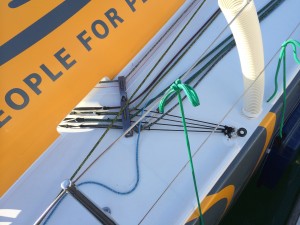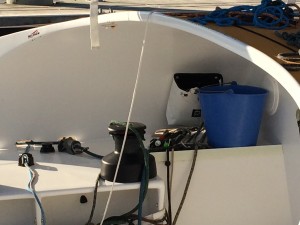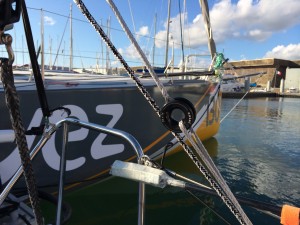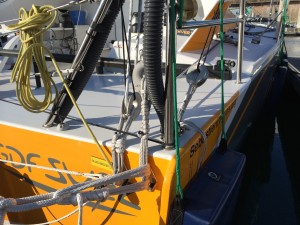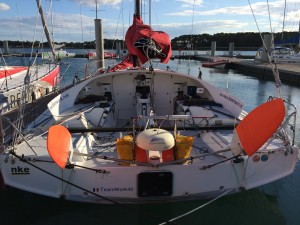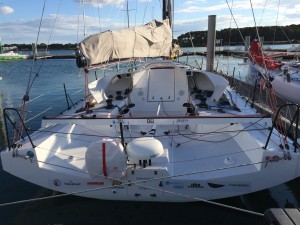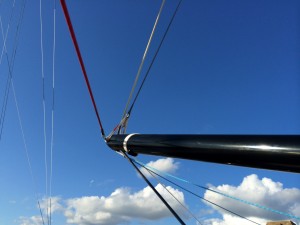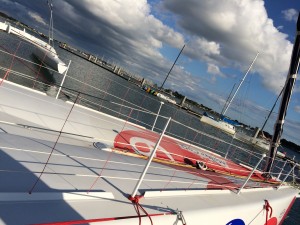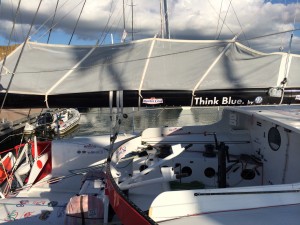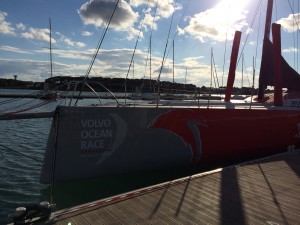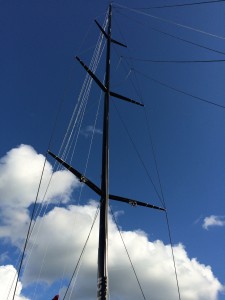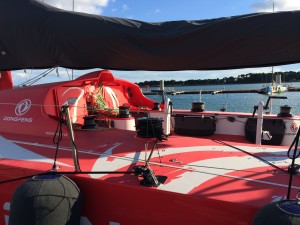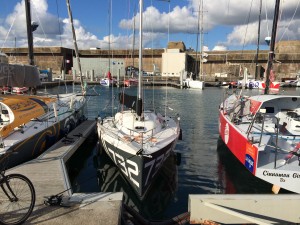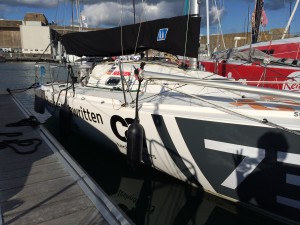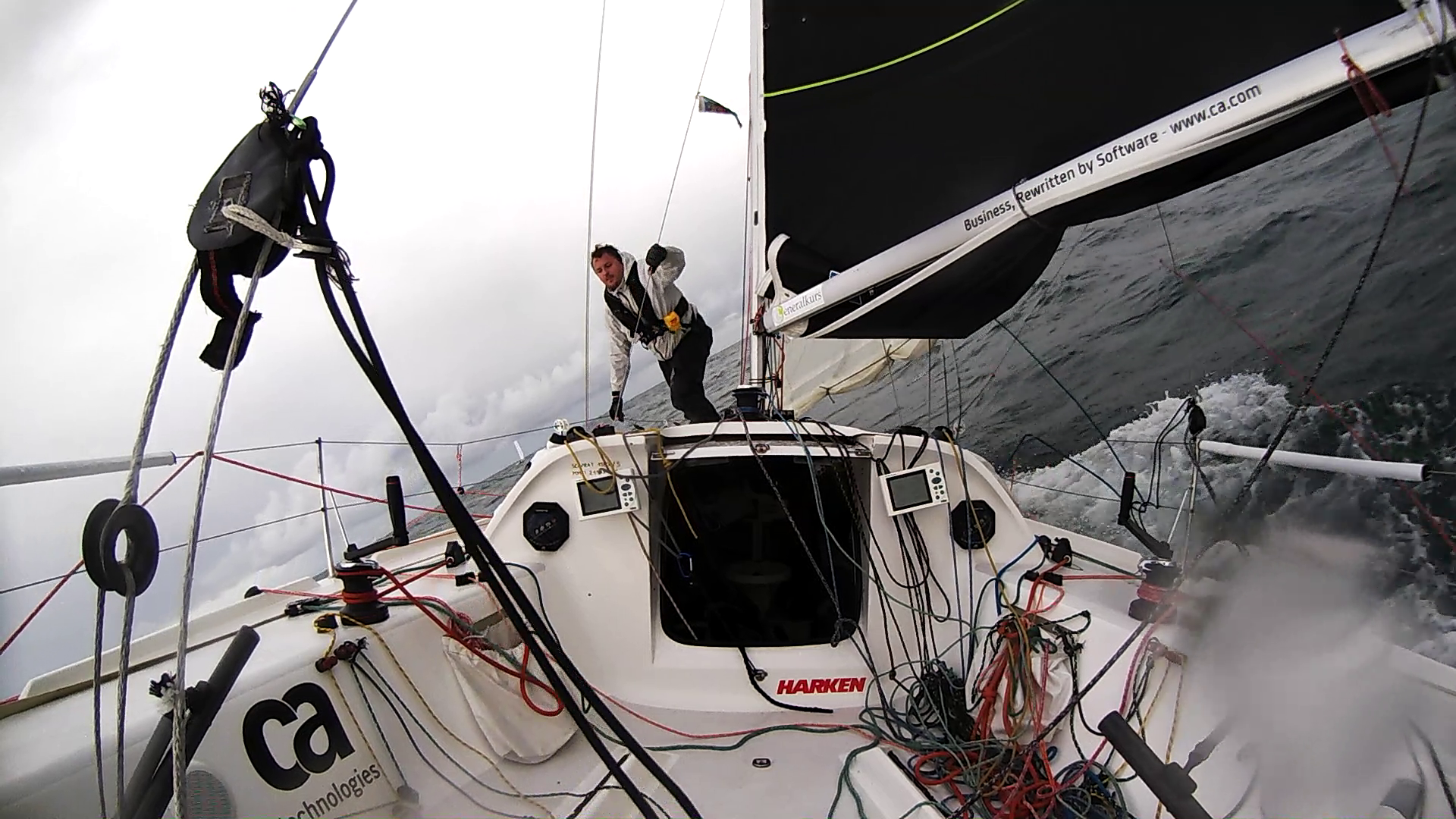
Fall training with Lorient Grand Large
Winter’s coming and that means a final set of training sessions with my training group Lorient Grand Large before the end of the year.
The trainings I participate in begin saturday’s around 09:30am with a short briefing on the pontoon, the boats ready to leave the dock. Once out of the bay of Lorient, the sessions are a mix of speed-tests, maneuvers (tacking/gybing/sail changes), fun games (like the game where you have to attach, hoist & unroll your Code0, then sail with it two minutes, then take it down again, into the cockpit and all over again, the one who manages most hoists in 20 minutes wins) and towards the end of the day usually a race around some buoys back to the harbor.
We usually arrive back around 4pm where we get around 30 minutes of time to tidy up the boat, then we meet for a debriefing with videos, photos and feedback. Once I’m out of the briefing and have finished tidying up the boat and making the odd repair it is around 8pm.
On Sunday it’s the same program but we start at 8 am.
In October we did two weekends of training doublehanded where we mainly focused on sail trim with our trainer Tanguy Leglatin giving feedback on the water so we can find the perfect trim and mark our lines to be able to reproduce the settings lateron.
The two following weekends in November then focused on optimizing the maneuvers in singlehanded mode, working more actively with the pilot.
Mid-November we had a quite windy training with an impressive swell rolling from the Atlantic and a wind of 20 knots, the peak being 28 knots consistent. It was very interesting to do a long upwind speedtest in these conditions where Tanguy would instruct us to tack on his signal. As we were a large group of 12 boats it became immediately visible how much you can win or lose with a proper or screwed up tack.
When the wind picked up to 28 knots we reefed the solent (the main was already in 1st reef) and tried (my personal less favorite) Code0-“game” (ref. above). With a boatspeed of already 9 knots (without the Code0) and quite gusty conditions it was a wet ride and with the odd autopilot in our fleet not working perfectly you also had to make sure not to collide with another boat whose skipper was wrestling with his Code0 on the bow.
My participation in that exercise was over after my 2 minutes of sailing with Code0 (doing 12kn) when it turned out that the furling line had separated from the furler and I had the pleasure of taking down the 30sqm foil sail in a classical Spinnaker “douse”, trying to squeeze it down the companionway. Once that was done I turned back towards Ile de Groix and soon the rest of the group caught up and we had a nice ride back to Lorient with the Code5 (storm spinnaker) doing 12-16 knots.
The sunday was a bit of a contrast. On the way out of the bay we had the big kite up and gybed our way out (12 boats again) but once we reached the end of Lorient’s southern approach the sea was dead calm. Turned out we were in the center of a depression, with impressive clouds at the horizon with blue skies but not the slightest wind for us.
For two hours we tried to compare Code0s vs. Code5s and later any sail combination there was to make any headway until we finally gave up at around 2pm when a tiny bit of thermic gave us just enough wind to get back into port.

Some impressions from Lorient
Some impressions from the boats in Lorient. We have a VO65, Open 60, Class 40 and my mini. Looking back I should have taken some pics of the 80,70 and 50ft trimarans as well but only monohulls for now.
Some really nice rigging and splicing ideas out there, dyneema everywhere. Although it is still weird to see the mast of an open 60 being held in place by 8mm dyneema lashings.
On another note I find it interesting that the cockpit of an Open60 and a Class40 doesn’t really differ much in size any more. Trend goes towards more protected, smaller cockpits.
The last two pictures show the bank of “constrictor” clutches on GDF Suez. sweet!

Dust yourself up and try again
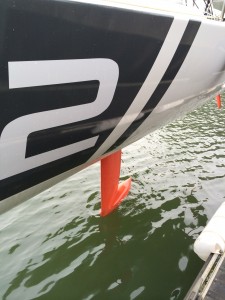 Let’s face it: this year didn’t quite work as planned for me.
Let’s face it: this year didn’t quite work as planned for me.
In the first race of the year – the Pornichet Select – my autopilot failed and I had to hand-steer most of the time, during the Mini en Mai my backstay broke and I gave up.
That wasn’t too huge of a problem yet though since I had the Mini Fastnet race as my backup-plan to still be able to meet all the qualification criteria for the acores race.
But then I had to abandon my 1000nm solo qualifier because of autopilot trouble and an injury which had the effect of also stopping me from doing the Mini Fastnet. Finally there wasn’t enough time any more to finish my qualification for the Acores race and it became apparent that that race would start without me this year.
That sucked.
But after a couple of days of grumpiness I guess it’s now time to “dust yourself off and try again” and come up with a new plan for the remainder of 2014: to finish my qualification for the 2015 Mini Transat.
My plan is to redo my 1000nm qualifier either in july/august or august/september. That would leave me with just one category “B” race to finish in order to complete my qualification.
With the category B “Mini Barcelona” race that starts oct 16th from – who’d have guessed – Barcelona around the island of Menorca and back to Barcelona I should hopefully have checked that box as well on oct 20th.
So, that’s the plan. Let’s get going!
Mini en Mai: Start postponed
The race director has postponed the race for the time being as the route of the low pressure system which is going to hit the bay of biscay on thursday is still not predictable.
The fronts of that system will bring winds of 35 knots with gusts going up to 45 knots so taking the time to analyze the situation better is certainly appropriate.
The next briefing is scheduled for 10:30am, I assume it is going to be a more or less completely new course.












